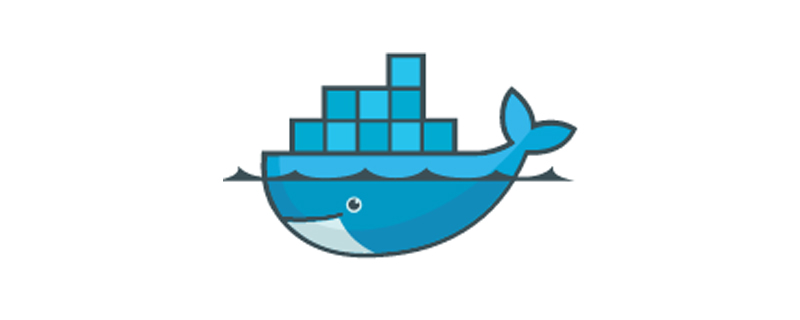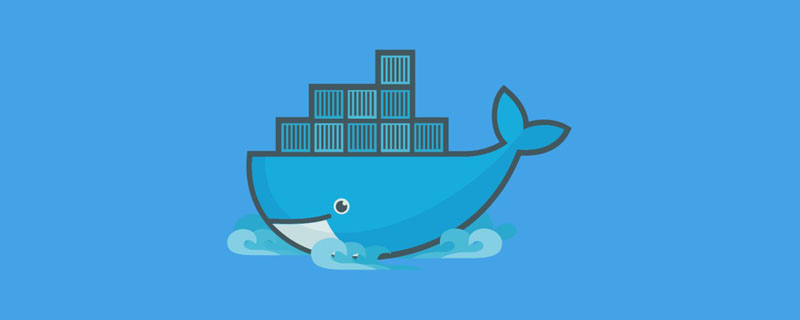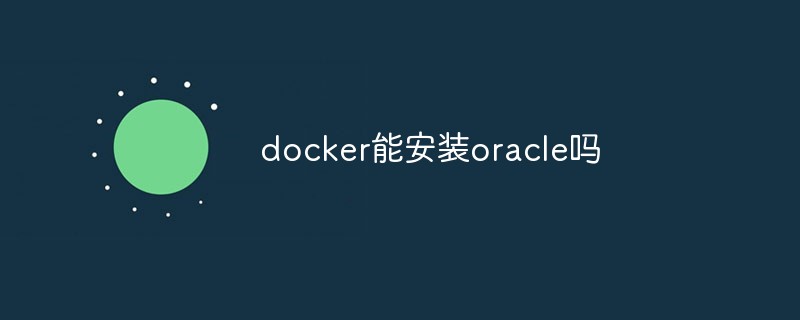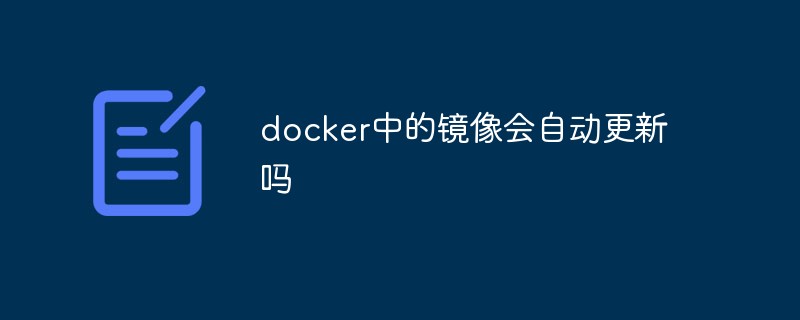 Backend Development
Backend Development PHP Tutorial
PHP Tutorial Best Practices for Docker Compose, Nginx, and MariaDB: Monitoring and Optimizing Deployed PHP Applications
Best Practices for Docker Compose, Nginx, and MariaDB: Monitoring and Optimizing Deployed PHP Applications
Best Practices for Docker Compose, Nginx, and MariaDB: Monitoring and Optimization of Deployed PHP Applications
Introduction:
In modern application development, containers Transformation has become a popular way to help us better manage and deploy applications. Docker Compose is a tool for defining and running multiple containers, which simplifies the application deployment and management process. This article will introduce how to use Docker Compose combined with Nginx and MariaDB to deploy and optimize PHP applications, and give specific code examples.
- Preparation work:
Before starting, make sure Docker and Docker Compose have been installed, and obtain the PHP image. - Create a Docker Compose file:
Create a file named docker-compose.yml and define the configuration of the container in the file. Here is an example:
version: '3'
services:
nginx:
image: nginx
ports:
- "80:80"
volumes:
- ./nginx.conf:/etc/nginx/nginx.conf
depends_on:
- php
php:
image: php:7.4-fpm
volumes:
- ./php.ini:/usr/local/etc/php/php.ini
- ./app:/var/www/html
depends_on:
- mariadb
mariadb:
image: mariadb
environment:
- MYSQL_ROOT_PASSWORD=123456
volumes:
- ./data:/var/lib/mysqlIn this example, we define three services: nginx, php and mariadb. The nginx service will listen to port 80 of the host and forward the request to the php service for processing. The php service uses the php:7.4-fpm image and mounts the php.ini and application file directories. The mariadb service uses the mariadb mirror, sets the root password of the database, and mounts the data directory.
- Configuring Nginx:
In the previous step, we have defined the Nginx service and mounted a configuration file named nginx.conf. We need to create this file on the host machine and configure it in the file. The following is a simple nginx.conf configuration example:
worker_processes auto;
events {
worker_connections 1024;
}
http {
# 其他配置项省略
server {
listen 80;
server_name localhost;
root /var/www/html;
location / {
try_files $uri $uri/ /index.php$is_args$args;
}
location ~ .php$ {
fastcgi_pass php:9000;
fastcgi_index index.php;
fastcgi_param SCRIPT_FILENAME $document_root$fastcgi_script_name;
include fastcgi_params;
}
}
}In this example, we configure the number of Nginx worker processes, the number of event connections, and the http service. In the server block, we defined the method of listening to port 80, setting the root directory and processing PHP scripts. Pay attention to modify the fastcgi_pass directive to the container address of the PHP service.
- Configuring MariaDB:
In the previous step, we have defined the MariaDB service and set the root password. When connecting to the database in your application, you need to use the correct address and password. The following is an example of PHP code to connect to MariaDB:
<?php
$host = 'mariadb';
$user = 'root';
$password = '123456';
$database = 'mydb';
$conn = new mysqli($host, $user, $password, $database);
if ($conn->connect_error) {
die("Connection failed: " . $conn->connect_error);
}
echo "Connected successfully";
$conn->close();
?>In this example, we used mariadb as the hostname and the root password defined earlier.
- Start the container:
After completing the above configuration, we can use the following command to start the container:
docker-compose up -d
This command will start all defined services and Runs in the background.
- Monitoring and optimization:
After deploying PHP applications through Docker Compose, monitoring and optimization are also very important parts. The following are some commonly used monitoring and optimization methods:
- Use the
docker statscommand to check the resource usage of each container, and you can find abnormalities and performance bottlenecks in time. - Use the
docker-compose logscommand to view the log information of the container to quickly locate errors and problems. - Use monitoring tools, such as Prometheus and Grafana, to collect and display application performance indicators so that timely measures can be taken.
- For the optimization of PHP applications, you can consider using caching mechanisms, optimizing database queries, adjusting PHP configuration parameters and other methods.
Conclusion:
This article introduces how to use Docker Compose, Nginx and MariaDB to deploy and optimize PHP applications, giving specific code examples. Through containerized deployment, we can easily manage and expand applications, and improve application performance and stability through monitoring and optimization. I hope this article helps you when deploying PHP applications.
The above is the detailed content of Best Practices for Docker Compose, Nginx, and MariaDB: Monitoring and Optimizing Deployed PHP Applications. For more information, please follow other related articles on the PHP Chinese website!
 docker中rm和rmi有什么区别Jul 14, 2022 am 11:02 AM
docker中rm和rmi有什么区别Jul 14, 2022 am 11:02 AMdocker中rm和rmi的区别:rm命令用于删除一个或者多个容器,而rmi命令用于删除一个或者多个镜像;rm命令的语法为“docker rm [OPTIONS] CONTAINER [CONTAINER...]”,rmi命令的语法为“docker rmi [OPTIONS] IMAGE [IMAGE...]”。
 docker官方镜像有哪些May 12, 2022 pm 02:23 PM
docker官方镜像有哪些May 12, 2022 pm 02:23 PMdocker官方镜像有:1、nginx,一个高性能的HTTP和反向代理服务;2、alpine,一个面向安全应用的轻量级Linux发行版;3、busybox,一个集成了三百多个常用Linux命令和工具的软件;4、ubuntu;5、PHP等等。
 docker是免费的吗Jul 08, 2022 am 11:21 AM
docker是免费的吗Jul 08, 2022 am 11:21 AMdocker对于小型企业、个人、教育和非商业开源项目来说是免费的;2021年8月31日,docker宣布“Docker Desktop”将转变“Docker Personal”,将只免费提供给小型企业、个人、教育和非商业开源项目使用,对于其他用例则需要付费订阅。
 docker容器重启后数据会丢吗Jun 17, 2022 am 10:41 AM
docker容器重启后数据会丢吗Jun 17, 2022 am 10:41 AMdocker容器重启后数据会丢失的;但是可以利用volume或者“data container”来实现数据持久化,在容器关闭之后可以利用“-v”或者“–volumes-from”重新使用以前的数据,docker也可挂载宿主机磁盘目录,用来永久存储数据。
 什么是docker最早支持的存储引擎May 12, 2022 pm 03:27 PM
什么是docker最早支持的存储引擎May 12, 2022 pm 03:27 PMAUFS是docker最早支持的存储引擎。AUFS是一种Union File System,是文件级的存储驱动,是Docker早期用的存储驱动,是Docker18.06版本之前,Ubuntu14.04版本前推荐的,支持xfs、ext4文件。
 docker存储空间不足怎么办Jul 22, 2022 pm 03:44 PM
docker存储空间不足怎么办Jul 22, 2022 pm 03:44 PM解决方法:1、停止docker服务后,利用“rsync -avz /var/lib/docker 大磁盘目录/docker/lib/”将docker迁移到大容量磁盘中;2、编辑“/etc/docker/daemon.json”添加指定参数,将docker的目录迁移绑定;3、重载和重启docker服务即可。
 docker能安装oracle吗Jul 08, 2022 pm 04:07 PM
docker能安装oracle吗Jul 08, 2022 pm 04:07 PMdocker能安装oracle。安装方法:1、拉取Oracle官方镜像,可以利用“docker images”查看镜像;2、启动容器后利用“docker exec -it oracle11g bash”进入容器,并且编辑环境变量;3、利用“sqlplus /nolog”进入oracle命令行即可。
 docker中的镜像会自动更新吗Jun 22, 2022 pm 04:23 PM
docker中的镜像会自动更新吗Jun 22, 2022 pm 04:23 PMdocker中的镜像会自动更新;可以利用Watchtower工具来自动更新镜像,Watchtower是一个可以监控正在运行的容器镜像是否更新的工具,当本地镜像与远程镜像有差异的时候,可以自动使用当前容器的运行参数以新镜像重新创建一个新的容器,并删除旧的容器。


Hot AI Tools

Undresser.AI Undress
AI-powered app for creating realistic nude photos

AI Clothes Remover
Online AI tool for removing clothes from photos.

Undress AI Tool
Undress images for free

Clothoff.io
AI clothes remover

AI Hentai Generator
Generate AI Hentai for free.

Hot Article

Hot Tools

SublimeText3 Linux new version
SublimeText3 Linux latest version

PhpStorm Mac version
The latest (2018.2.1) professional PHP integrated development tool

Atom editor mac version download
The most popular open source editor

SAP NetWeaver Server Adapter for Eclipse
Integrate Eclipse with SAP NetWeaver application server.

Zend Studio 13.0.1
Powerful PHP integrated development environment




